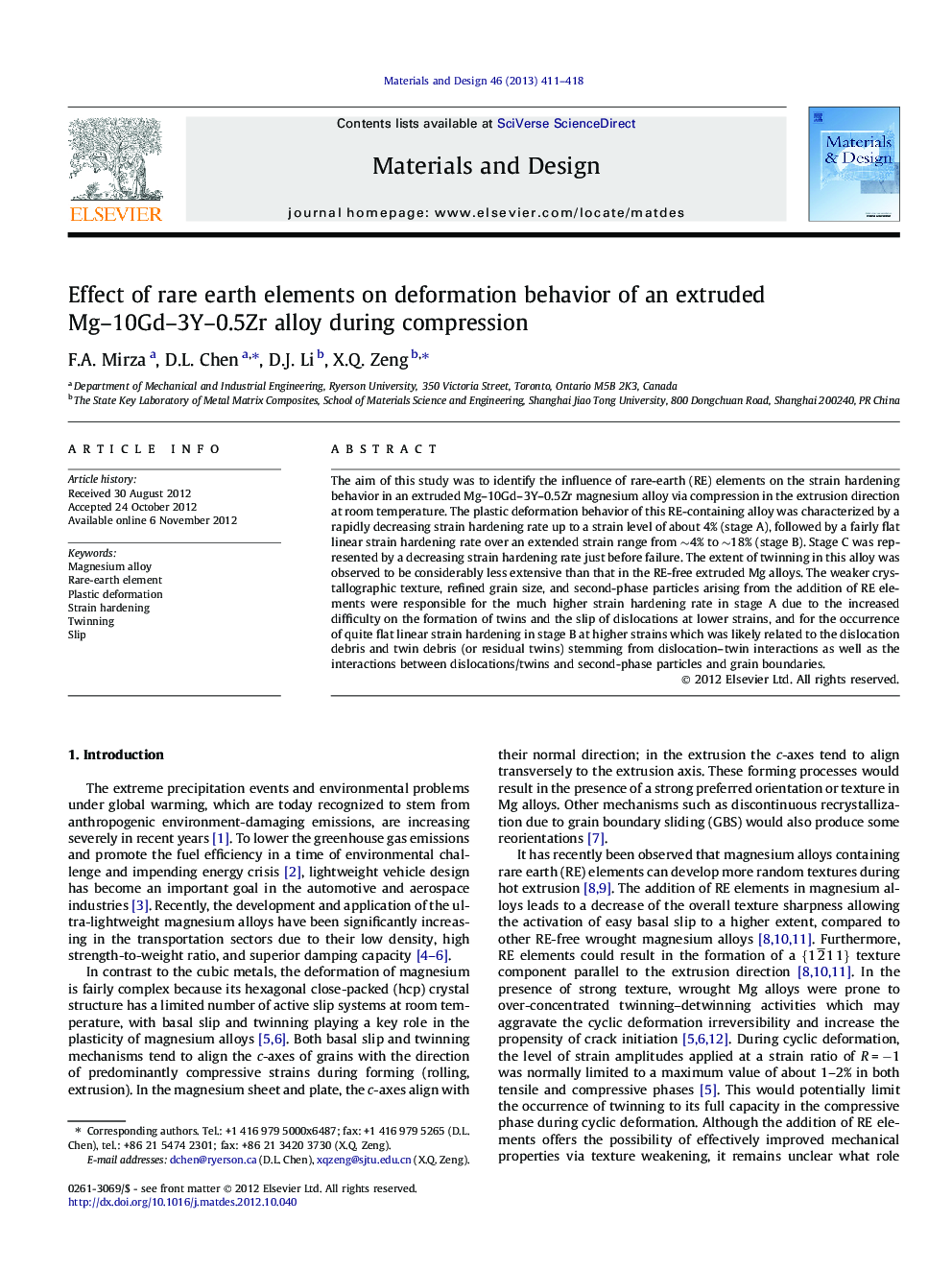| Article ID | Journal | Published Year | Pages | File Type |
|---|---|---|---|---|
| 830162 | Materials & Design (1980-2015) | 2013 | 8 Pages |
The aim of this study was to identify the influence of rare-earth (RE) elements on the strain hardening behavior in an extruded Mg–10Gd–3Y–0.5Zr magnesium alloy via compression in the extrusion direction at room temperature. The plastic deformation behavior of this RE-containing alloy was characterized by a rapidly decreasing strain hardening rate up to a strain level of about 4% (stage A), followed by a fairly flat linear strain hardening rate over an extended strain range from ∼4% to ∼18% (stage B). Stage C was represented by a decreasing strain hardening rate just before failure. The extent of twinning in this alloy was observed to be considerably less extensive than that in the RE-free extruded Mg alloys. The weaker crystallographic texture, refined grain size, and second-phase particles arising from the addition of RE elements were responsible for the much higher strain hardening rate in stage A due to the increased difficulty on the formation of twins and the slip of dislocations at lower strains, and for the occurrence of quite flat linear strain hardening in stage B at higher strains which was likely related to the dislocation debris and twin debris (or residual twins) stemming from dislocation–twin interactions as well as the interactions between dislocations/twins and second-phase particles and grain boundaries.
► The alloy studied has threefold higher compressive yield strength than AM30 alloy. ► Formation of twins is less extensive than that in the RE-free extruded Mg alloys. ► Deformation of the RE-containing Mg alloy is characterized by three distinct stages. ► Rare earth elements effectively increase the strain hardening rate in stage A. ► Fairly flat and linear strain hardening occurs in stage B over an extended range.
